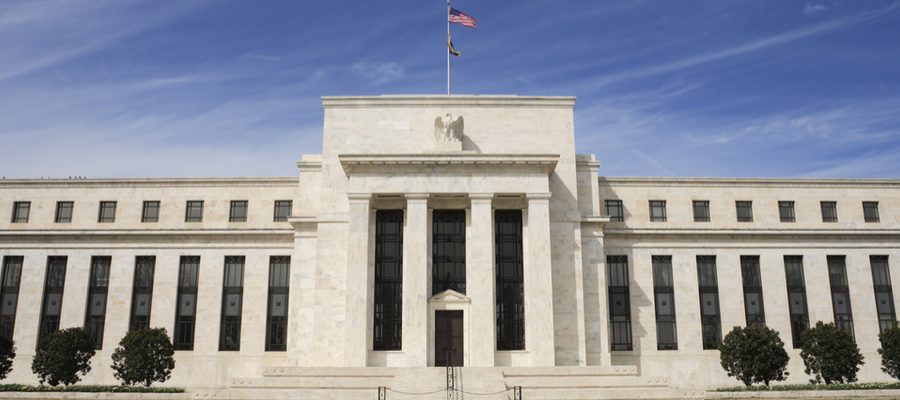by Kristina Hooper, Global Market Strategist, Invesco Ltd., Invesco Canada
Last week was momentous for one specific reason: The Federal Open Market Committee (FOMC) released minutes from its January meeting, which detailed the significant “about face” that the Federal Reserve (Fed) has made over the last few months. In my view, the FOMC’s insights, along with apparent progress in U.S.-China trade talks, could enable stocks to move higher in the short term – but I’m also wary of negative implications that could lie beneath the surface.
The Fed may pause normalization and rate hikes
The FOMC minutes noted that “almost all participants thought that it would be desirable to announce before too long a plan to stop reducing the Federal Reserve’s asset holdings later this year.” This came as a surprise to many investors, especially after Fed Chair Jay Powell insisted just a few months ago that balance sheet normalization would remain on autopilot. In my view, the likelihood that the Fed may stop the balance sheet reduction this year should be positive for risk assets given the impact quantitative easing had on them. In other words, the “Fed put” appears to be alive and well.
In addition, the Fed appears to be hitting the pause button on rate hikes – at least for the time being. According to the minutes, “many participants suggested that it was not yet clear what adjustments to the target range for the federal funds rate may be appropriate later this year.” Not only is the Fed likely to sit on its hands with regard to rate hikes in coming months, but some Fed watchers are suggesting that the Fed’s next move, when it occurs, might be a rate cut. While that seems quite unlikely at this juncture, it does seem clear to me that the Fed doesn’t have great clarity on the state of the economy. However, it can take the time to get a better grasp of it.
U.S.-China trade talks bring progress and new uncertainties
In the last several days, reports suggest significant progress has been made in the U.S.-China trade talks, with U.S. President Donald Trump tweeting last week, “We’re doing spectacular things on trade.” Trump said he will extend the March 1 deadline for tariffs because so much progress has been made.1
My understanding was that the agreement would include critical issues such as access to markets, forced technology transfer and intellectual property rights – that certainly has been the goal of the U.S. Trade Representative, Robert Lighthizer. However, I never expected China to make any material concessions in those areas – certainly not this quickly. And Chinese officials have warned that while progress has been made, there may be “new uncertainties” given that U.S.-China trade conflicts are “long-term, complicated and arduous.”2
I believe any fast resolution to the trade wars between the U.S. and China will likely come because Trump is willing to take concessions on the trade deficit just to end the trade war. And that is what appears to be happening, with U.S. Agricultural Secretary Sonny Perdue praising China’s agreement to purchase tons of soybeans, a much-needed help to U.S. soybean farmers who have been hurt by the trade wars and have been unable to sell their crops.
What could all this mean for stocks?
You may recall that the fourth-quarter stock market sell-off could largely be attributed to the two key risks we had been discussing all last year: tariff wars and monetary policy normalization. The catalysts for the October market drop were:
- A growing recognition that the U.S.-China trade conflict was having an impact on the economy and corporate profit margins. (The International Monetary Fund downgraded economic growth estimates for 2019 and beyond partly because of the trade situation, and we got comments during third-quarter earnings calls from some industrial companies indicating that input costs are increasing, and supply chains are being disrupted.)
- Powell’s statements that Fed rate hikes were “a long way” from getting rates to neutral.
Risk asset weakness continued in the fourth quarter under the weight of these two concerns. As recently as Dec. 19, at the FOMC meeting press conference, Powell insisted that balance sheet normalization would remain on autopilot, explaining, “I think that the runoff of the balance sheet has been smooth and has served its purpose, and I don’t see us changing that.” And so what happened this past week suggests that both those risks have receded, clearing the way for stocks to move higher.
Or does it?
Could such a dramatic change from the Fed be a cause for alarm instead? First of all, recall that when former Fed Chair Janet Yellen introduced balance sheet normalization in 2017, she was clear that the process would be on autopilot with no alterations or reversion back to quantitative easing unless there was a “sufficient” negative shock to the economy. We have to wonder – and worry – about what the Fed is seeing or expecting that has caused them to consider not only scaling back balance sheet normalization, but actually ending it this year.
This calls to mind the old adage, “Be careful what you wish for.” Yes, I believe balance sheet normalization has created disruption – particularly in emerging markets where it was causing a “liquidity suck.” I also believe it has created a headwind for equities, especially when the Fed has insisted it would remain on autopilot. I would have welcomed a dialing down of balance sheet normalization or a data-dependent normalization process, but a complete cessation in balance sheet normalization this year worries me. Not only because we have to wonder what is causing this change in position by the Fed, but because it suggests the Fed will still have a bloated balance sheet by the time the next crisis rolls around – and therefore might not have enough dry powder to combat it. The pessimist in me wonders if the Fed, in the face of the next crisis, will be forced to resort to other experimental tools … perhaps helicopter money?
In addition, given that we have experienced apparent progress many times before, we have to temper enthusiasm for signs of a resolution to the U.S.-China trade wars – not only because the Lighthizer camp might throw a wrench into an easy resolution, but because if it’s resolved, it may mean that the U.S. can quickly launch into a trade war with the European Union and/or Japan.
But, for now, both these developments suggest a more positive environment for U.S. equities, which I believe is likely to spill over into a positive environment for global equities in general. But I would advise caution as we follow both situations closely.
What to watch this week
Looking ahead, there are some important market dates and events to pay attention to this week:
- The first estimate of fourth-quarter U.S. gross domestic product (GDP) will be released. This GDP print was due a while back (Jan. 30, to be exact), but the government shutdown delayed its release until Feb. 28. Though late, this will be important in helping to assess economic growth in the fourth quarter, especially given that the Federal Reserve Bank of Atlanta’s GDPNow estimate of fourth quarter GDP growth moved down to 1.4% (one key factor pushing it lower was the abysmal December retail sales number).3
- Trump and North Korean Chairman Kim Jong Un will have their second summit in Vietnam this week. The expectation is for continued constructive dialogue between the two parties with limited steps forward, and for sanctions to still remain. I expect the South Korean and Japanese economies to see little near-term economic benefits, despite the potential for positive investor sentiment.
- The Eurozone Economic Confidence indicator as well as the U.K.’s Consumer Confidence and Business Barometers will be released this week. Given the geopolitical turmoil and uncertainty in the region, these are readings that are more important than they’d be in a more normal environment, as they can help us get an understanding of current sentiment, which can impact business investment and retail spending.
- Powell’s Humphrey-Hawkins testimony to the U.S. Congress begins this week. This is the single most important event of the week, as the Fed chair will be grilled by legislators about Fed policy. We are likely to get a lot more insight into the rationale behind the Fed’s apparent about face on balance sheet normalization, as well as more current insights into the Fed’s thinking and outlook.
- U.S.-China trade talks are set to continue. Trump announced a delay on the previous March 1 tariffs on Chinese goods due to “substantial progress” made recently between both sides. However, there are question marks on whether they can really reach an agreement on important structural issues such as intellectual property protection and technology transfer. We may see an agreement largely around concession from China on narrowing the trade deficit – if hard-liners within the administration don’t intervene. That, of course, would be positive for risk assets.
- U.S. personal income and spending will be released. This will be important to review in order to assess whether the weak December retail sales reading was an anomaly or part of a troubling trend.
The 2018 GDP print for Canada will be released this week. Bank of Canada Governor Stephen Poloz recently reiterated that he believes further rate hikes are necessary to get to a neutral range; however, he also made it clear that there was significant uncertainty in the bank’s outlook on rates. Readings on economic growth will be important especially given that the Bank of Canada is increasingly focused on financial system vulnerabilities – specifically “historically high levels of household debt and elevated housing market imbalances.”4 In particular, high household debt is likely to create greater interest rate sensitivity with regard to consumption, which could negatively impact growth, so it’s important to follow economic growth readings closely.
This post was originally published at Invesco Canada Blog
Copyright © Invesco Canada Blog













